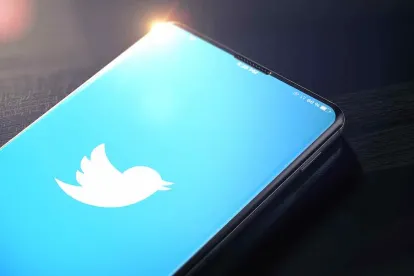Last month, in an important ruling for Internet service providers, and anonymous users alike, a new defense is taking shape to subpoenas issued pursuant to the “unmasking” provisions of the Digital Millennium Copyright Act (“DMCA”). Specifically, in In re DMCA § 512(h) Subpoena to Twitter, Inc., N.D. Cal. Case No. 20-mc-80214, district judge Vince Chhabria held that subpoenas issued pursuant to 17 U.S.C. § 512(h) may be subject to First Amendment scrutiny. This requires that the subject of the subpoena must be notified of the subpoena and given a chance to be heard. It also requires that the plaintiff seeking the disclosure will need to disclose why it wants to unmask the user to demonstrate why its rights are superior to the anonymous speaker’s First Amendment rights.
In this case, Twitter received a DMCA takedown request by Bayside Advisory LLC concerning tweets by the pseudonymous Twitter account, MrMoneyBags, @CallMeMoneyBags criticizing Brian Sheth, a private equity billionaire. Twitter complied and removed the images (although, left the text of the tweets). Then, Bayside, pursuant to 17 U.S.C. § 512(h), issued a subpoena seeking to compel Twitter to disclose the identity of MoneyBags.
Twitter sought to quash the 512(h) subpoena by arguing, among other things, that disclosing the identity of an anonymous user “would violate MoneyBag’s First Amendment rights.” The Magistrate Judge did not agree with Twitter and upheld the subpoena. Twitter sought review by Judge Chhabria, who reversed and found that “courts must consider the First Amendment implications of disclosure” when a discovery request risks infringing a speaker’s First Amendment rights.
The court uses a simple two-step inquiry to determine whether an anonymous speaker’s identity should be revealed. First, the court determines if the party seeking the disclosure (Bayside) demonstrated a prima facie case on the merits of its underlying claim (i.e., copyright infringement by MoneyBags). Then, the court must balance the equities by weighing the potential harm to the party seeking disclosure against the speaker’s interest in anonymity, in light of the strength of the underlying copyright infringement claim.
On the first inquiry, the court determined that Bayside did not establish a clear case of copyright infringement because MoneyBag’s use of the photos constitutes fair use. If the use is fair, it is not infringement. To determine if the use of a photo constituted fair use, the court evaluated four factors:
-
Purpose and character of the use. The tweets were not for commercial gain, which weighs in favor of fair use. The transformative use of the photos, or the “expression of the author’s apparent distaste for the lifestyle and moral compass of one-percenters,” falls under the category of “criticism” and “comment.”
-
Nature of the copyrighted work. The photos were published at the time of copying, which weighs in favor of fair use. On the other hand, there is some artistic elements to some of the photographs. However, the court did not consider this factor much because Bayside had not provided any information about the photographs.
-
Amount and substantiality of the portion used in relation to the copyrighted work as a whole. The court did not consider this factor because it is not helpful in the context of a photograph that “is not meaningfully divisible.”
-
Effect the use has upon the potential market for or value of the copyrighted work. The court stated, “[w]hen a use is transformative and non-commercial, it is difficult to infer market harm.” Further, “[t]o make a prima facie case of copyright infringement in this context, Bayside must offer some explanation for how its financial interests in the copyrights could be harmed by a use like the tweets at issue here.” But they failed to do so.
Bayside did not provide a satisfactory explanation to the inquiry of how MoneyBags’ use of the photos would cause it harm. Bayside’s less-than-forthright response not only sank its hopes of showing harm but also raised red flags: Was Bayside created by, or connected to, Brian Sheth (the individual who was subject of MoneyBags’ criticism), simply as a means of fighting the images used in the tweets, or worse, “abusing the judicial process in an effort to discover MoneyBags’s identity for reasons having nothing to do with copyright law”?
Critically, the court reasoned that even if Bayside had made a clear case showing copyright infringement, “the subpoena would still need to be quashed because the balance of equities tilts in MoneyBags’s favor.” The court believes that “unmasking MoneyBags … risks exposing him to ‘economic or official retaliation’ by Sheth or his associates.” The court also considered other tweets by MoneyBags that “discuss issues of political importance such as sexual harassment, tax enforcement, and corporation regulations,” further heightening MoneyBags’ interest in anonymity.
The court summed the case up best as follows:
Accordingly, the record will stand, and the people connected to this mysterious company will succeed in preserving their own anonymity. But Bayside’s choice not to supplement the record makes it quite easy to balance MoneyBags’s interest in preserving his anonymity against Bayside’s alleged interest in protecting its apparent copyrights. On this record, even if Bayside had made a prima facie showing of copyright infringement, the Court would quash the subpoena in a heartbeat. [Emphasis added.]
Implications
This ruling has the potential for far-reaching impacts on DMCA takedown notices and what parties seeking to unmask infringers must show to obtain the others’ identities. On its face, if this approach is followed by other district courts, the party seeking to unmask an individual must be prepared to show not only that it can assert a successful infringement claim, but also that the reason for bringing the infringement action is not to chill legitimate speech.
The court’s specific finding that the anonymous user’s right to free speech would prevail even if Bayside could have established a prima facie showing of infringement provides an important baseline for copyright holders to keep in mind. Ultimately, the lesson is that if you are seeking to unmask an online critic, you better be prepared to make a strong showing that the lawsuit’s motivation is vindication of important IP rights and not to chill speech.





 />i
/>i

